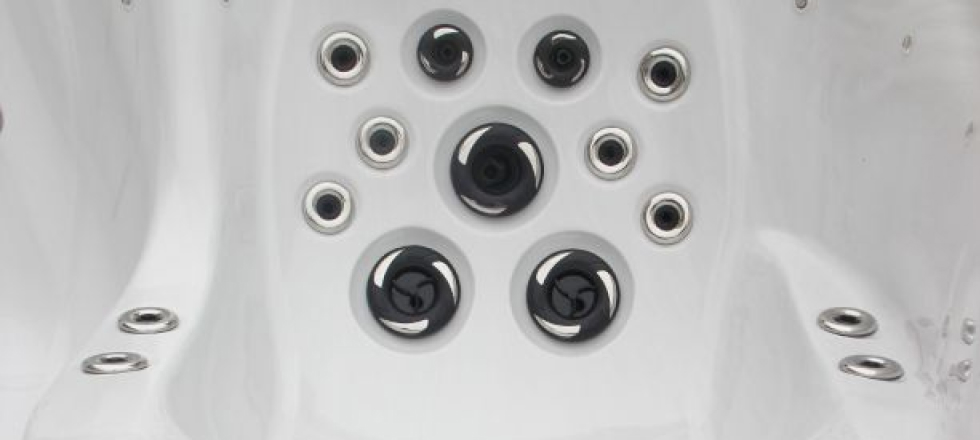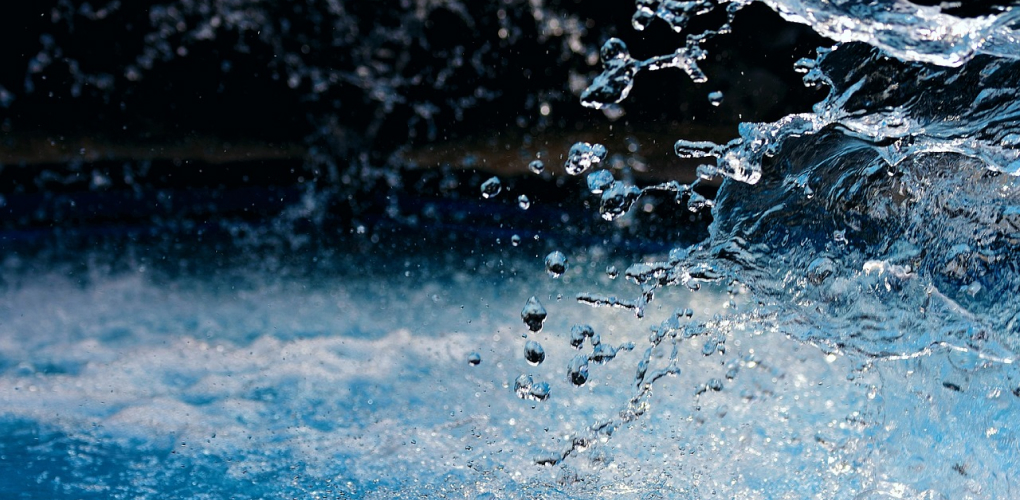Understanding chemical balancing is important for healthy, clean and clear hot tub water. However, if you're new to this, you may be overwhelmed by all the information available. That's why, in this guide, we break down the essential info to give you an uncomplicated, and easy to follow guide on
hot tub chemical use.

Hot Tub Chemicals - FAQs
Let's start off our chemical guide by answering some of our most frequently asked questions on hot tub chemicals.
1. What Chemicals Are Needed to Start Up a Hot Tub?
After filling your hot tub with clean water, you will then need to add some
chemicals to keep the water clean and balanced until it is changed. You will need to change the water every few months, depending on usage. Adding chemicals between water changes, ensures the water remains sanitary, clear and gentle on your hot tubs components and users skin. Let's break down the chemicals needed for hot tub start up:
Sanitisers
Sanitisers keep harmful bacteria at bay. The most popular choices for hot tub sanitiser are bromine and chlorine. Some hot tub owners use other forms of sanitation such as salt water systems, Biguanide, or even UV rays to kill bacteria. However, the use of such methods can be more expensive, less effective and even harm your hot tub components. For safest practice, only use the sanitisers recommended by your hot tub retailer or manufacturer.
Hot Tub Shock
Hot tub shocking uses a sanitiser to oxidise the hot tub water. Shock can be bromine, chlorine or non chlorine. Hot tub shocking is a more intense sanitation treatment used to break down contaminants and kill bacteria. It is recommended to shock your hot tub on first use and then periodically between water changes. You do not need to shock your hot tub as often as you add sanitiser. Once every 1-2 weeks for typical use is standard.
Shocking on first use is necessary as it sets a clean starting point for water chemistry. It will also help your sanitisers to work more effectively and help to remove any contaminants present due to the manufacturing process of your hot tub.
The choice of sanitiser is up to the individual user. Chlorine and bromine shouldn't be used together, but most hot tub owners will prefer one over another, due to various reasons, let's explore the nature of each sanitiser below:
Chlorine:
• Comes in tablet, granule form. Liquid chlorine is also available, but its use is not recommended in hot tubs. It is however, commonly used in swimming pools.
• Easy to use, only several teaspoons are needed to sanitise the whole tub.
• To use, refer to the package label for dosage requirements
• Effective sanitation, works faster than bromine to kill bacteria
• Less expensive than bromine
Bromine:
• Comes in granule or tablet form
• Easy to use, only several teaspoons are needed to sanitise the whole tub.
• To use, refer to the package label for dosage requirements
• Gentler on skin and eyes
• Slow dissolving
• More stable than chlorine at higher temperatures
PH Balancers
PH balancers are used to adjust the waters PH level. This may not be necessary depending on your water supply, but if you live in an area with particularly high or low PH, this will need to be adjusted. A balanced PH helps to ensure chemicals can work effectively and the water remains safe and comfortable.

2. What Are the Best Chemicals for a Hot Tub?
Choosing the 'best chemicals' for your hot tub depends on individual needs and preferences. Let's explore some popular options and their uses below:
Chlorine
Chlorine is a cheap and effective sanitiser for hot tubs. It dissolves quickly in granular form and only a small amount is needed with each dose to ensure effective sanitation.
Bromine
Bromine is a gentler alternative to chlorine. It effectively sanitises but tends to be more expensive and takes longer to start working in hot tub water.
PH Increases and Decreasers
PH balancers are often needed to adjust the PH of the hot tub water. If you live in a hard water area, you may notice your hot tub water tends to have a higher PH. Lowering the PH will help to ensure the effectiveness of your sanitiser and prevent corrosion of hot tub parts.
Water Clarifiers
Water clarifiers help keep cloudy water at bay. They work by clumping together small contaminant particles so they are large enough to be collected in your hot tub filter.
Foam Reducers
From time to time, your hot tub may become 'foamy'. This is usually caused by detergents and cosmetics from our hair, body, and swimwear entering the water. These detergents can then become foamy when the hot tub jets are turned on, similar to bubbles in a bath. Small amounts of foam are not usually a problem and can be kept at bay with a f
oam reducer. Large foam clouds however usually indicate it's time for a water change.
Biofilm Remover
Biofilm is a slimy substance that clings to hot tub surfaces and internal pipework. Unfortunately, biofilm is chlorine resistant, and so occasionally, a biofilm remover may need to be used. The biofilm remover is added to the hot tub and flushed through the system before the water is emptied. The remover will kill and remove biofilm from the hot tub surfaces and pipework.
Filter Cleaner
'Filter cleaner' does what it says on the tin. Your hot tub filter is an essential component in your spa to help ensure clear and safe water. Filters need to be cleaned regularly. These purpose-made cleaners are formulated to help break down dirt trapped within the filter cartridge to ensure effective use until the filters expiry.
Hot Tub Flush
Hot tub flush is a detergent formulated to clean out the hot tub's internal pipework and plumbing. It is a good idea to use a hot tub flush agent before a water change.
3. Can I Just Use Bromine Tablets in My Hot Tub?
Bromine tablets are convenient. They are easy to use and dissolve slowly. However, they may not be the only product you need.
•
Bromine Tablets: They are effective but may not handle all situations. You might need additional bromine doses to keep the water balanced and clear.
• Comparing Sanitisers: Bromine and chlorine are the two forms of sanitiser and both have thier pros and cons, that being said, chlorine tablets will damage acyric spas so should be avoided; chlorine granules are fine to use though.
For best results, follow the instructions on the product and test your water regularly.
The Importance of Regular Water Testing
Regularly testing your hot tub water is crucial to ensure that the chemical levels are balanced. By using
chlorine test strips or
bromine test strips, you can monitor the levels of sanitizers, pH, and alkalinity in the water. This helps you to make quick adjustments and prevents problems like cloudy water or skin irritation. Consistent testing ensures that your hot tub remains a safe and enjoyable environment for everyone.
.jpg)
Choosing the Right Sanitiser for Your Hot Tub
When selecting a sanitizer for your hot tub, it’s important to consider how often you use the hot tub and your personal preferences. Chlorine is a powerful and widely used option, known for its effectiveness in killing bacteria and keeping the water clean. On the other hand, bromine is often preferred by those who want a gentler option that works well in warm water and has a less noticeable smell. Both options are effective, so choosing the right one depends on your specific needs.
How to Use Chlorine Granules in Your Hot Tub
Using
chlorine granules is a simple and effective way to keep your hot tub water clean. Follow these easy steps:
Test the Water: Before adding chlorine, use chlorine test strips to check the current chlorine level and pH balance.
Measure the Granules: Refer to the instructions on the chlorine granules packaging to measure the correct amount for your hot tub size.
Turn On the Jets: Make sure the hot tub jets are running to help evenly distribute the chlorine throughout the water.
Add the Granules: Sprinkle the measured chlorine granules directly into the hot tub water, spreading them across the surface.
Let It Dissolve: Allow the granules to dissolve completely while the jets are running. This usually takes about 10-15 minutes.
Retest the Water: After the granules have dissolved, retest the water to ensure the chlorine level is within the recommended range (typically 3-5 ppm).
Wrapping it Up
Using the right chemicals is key to a great hot tub experience. Make sure to start with the basics and choose the best products for your needs. Check out the recommended products and keep your hot tub water clean and clear. For more information and products, visit our hot tub chemicals page.



.jpg)




.png)